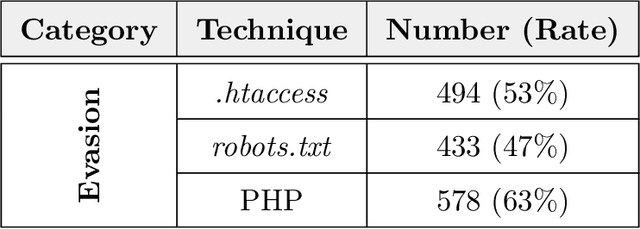Michele Colajanni
Classification of Web Phishing Kits for early detection by platform providers
Oct 15, 2022



Abstract:Phishing kits are tools that dark side experts provide to the community of criminal phishers to facilitate the construction of malicious Web sites. As these kits evolve in sophistication, providers of Web-based services need to keep pace with continuous complexity. We present an original classification of a corpus of over 2000 recent phishing kits according to their adopted evasion and obfuscation functions. We carry out an initial deterministic analysis of the source code of the kits to extract the most discriminant features and information about their principal authors. We then integrate this initial classification through supervised machine learning models. Thanks to the ground-truth achieved in the first step, we can demonstrate whether and which machine learning models are able to suitably classify even the kits adopting novel evasion and obfuscation techniques that were unseen during the training phase. We compare different algorithms and evaluate their robustness in the realistic case in which only a small number of phishing kits are available for training. This paper represents an initial but important step to support Web service providers and analysts in improving early detection mechanisms and intelligence operations for the phishing kits that might be installed on their platforms.
Hardening Random Forest Cyber Detectors Against Adversarial Attacks
Dec 09, 2019



Abstract:Machine learning algorithms are effective in several applications, but they are not as much successful when applied to intrusion detection in cyber security. Due to the high sensitivity to their training data, cyber detectors based on machine learning are vulnerable to targeted adversarial attacks that involve the perturbation of initial samples. Existing defenses assume unrealistic scenarios; their results are underwhelming in non-adversarial settings; or they can be applied only to machine learning algorithms that perform poorly for cyber security. We present an original methodology for countering adversarial perturbations targeting intrusion detection systems based on random forests. As a practical application, we integrate the proposed defense method in a cyber detector analyzing network traffic. The experimental results on millions of labelled network flows show that the new detector has a twofold value: it outperforms state-of-the-art detectors that are subject to adversarial attacks; it exhibits robust results both in adversarial and non-adversarial scenarios.
 Add to Chrome
Add to Chrome Add to Firefox
Add to Firefox Add to Edge
Add to Edge